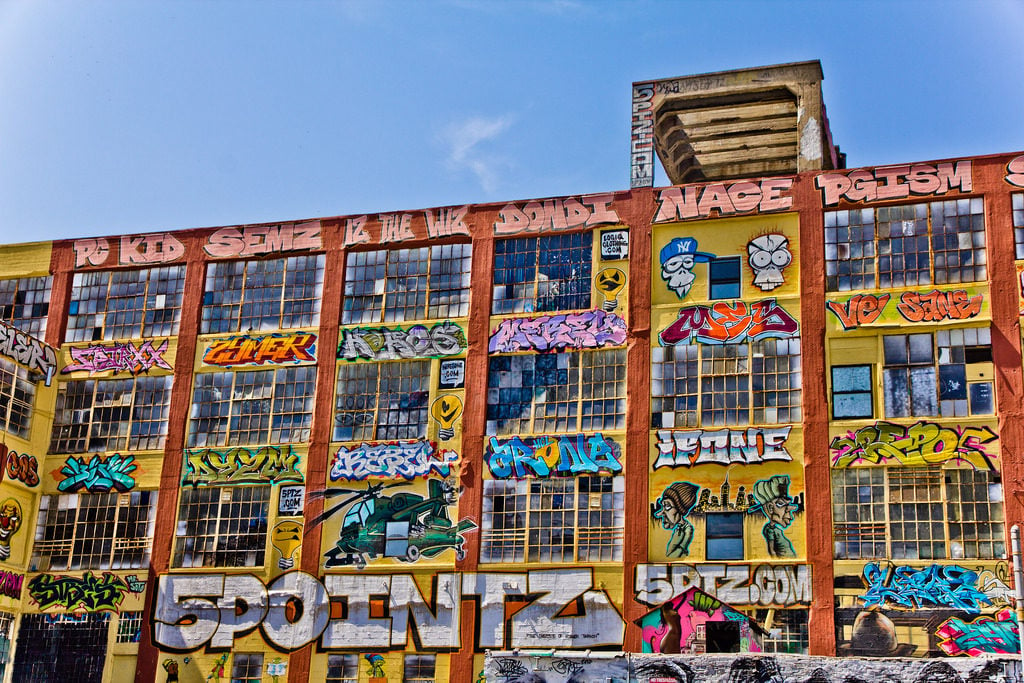Law & Politics
In a Surprise Verdict, Jury Says Developer Broke the Law by Whitewashing 5Pointz Graffiti Mecca
But the judge has yet to make his final ruling.

But the judge has yet to make his final ruling.

Eileen Kinsella

A federal court jury in Brooklyn has handed a preliminary victory to a group of graffiti and aerosol artists in a closely watched case that pitted the rights of street artists against those of a property developer.
The six-person jury found that real estate developer Gerald Wolkoff and his related companies broke the law when, in 2014, he whitewashed the 5Pointz graffiti mecca in Long Island City in the middle of the night. However, the jury decision will serve only as a recommendation to the case’s presiding judge, Frederick Block, who has yet to hand down a final verdict and assess whether any damages must be paid.
Eric Baum, the attorney representing the 5Pointz artists, said he and the artists are “ecstatic” about the decision. “The jury found the age-old saying ‘actions have consequences’ rings true. The strong message sent in this case is that art which is protected by federal law should be cherished and not destroyed or mutilated,” Baum told artnet News. “The federal law applied in this case protects the moral rights and integrity of the artists and the court will now use the jury’s determination in making a final decision on all issues.”
Jonathan Cohen, a street artist known as Meres One, oversaw all aspects of 5Pointz for more than a decade, including giving artists permission to paint at the site. He told artnet News via email: “5Pointz and my 11 years of volunteer work there we [sic] dedicated to an art form I love and live. I stood up for the culture from day one, and standing up in court for the artwork myself and fellow artists created was essential in getting closure.”
Even though Wolkoff made it clear in the early 1990s that he would only allow the graffiti artists to paint on the building temporarily, the group was outraged at the sudden destruction of their work. They filed suit in 2014, claiming that their rights had been violated under the Visual Artists Rights Act.
The artists’ legal argument centered largely on whether Wolkoff should have given them 90 days notice, and, if he had done so, whether some of their works could have been removed or preserved.
Defense attorney David Ebert argued that the artists had frequently painted over each other’s work over the years, and cast doubt on the feasibility of removing graffiti installations without destroying them. Ebert argued that the application of VARA was irrelevant since it was intended to protect art and not Wolkoff’s rights as a property owner. Ebert did not immediately respond to a request for comment.
The legal standard for VARA protection hinges on whether a work of art has “recognized stature,” a definition that experts concede is extraordinarily vague and subject to wide interpretation.
Further, as copyright experts note, it is extremely rare for VARA cases to actually make it to court because most are dismissed or settled beforehand. In another first, this case marked the first time that a jury decided a VARA claim in court.
“The real conundrum is what was the developer to do?” Barry Werbin, a copyright expert and attorney with Herrick Feinstein, told artnet News. “The answer in hindsight is any developer permitting art to be applied on its property needs to get a VARA waiver.”
Beyond the jury’s decision, Werbin added that judge will play a crucial role in this case and others like it. “The judge has wide discretion in setting damages, too, and that will be the real issue,” he said.
“This is a win for artists’ rights all across the country. This is a win for the visual artists and their protection under VARA,” said adviser and appraiser Renee Vara (no relation to the law), and an expert witness in the case, in an email. “This is a clear message by the people that the whitewash was a cruel willful act and Jerry Wolkoff was held accountable.”
Vara said the case sends a message that artists and their creations matter. While she acknowledged that this was a difficult case, she called it “a win for graffiti art and visual artists.” The artists’ “resilience to endure this long legal process should be noted as its likely to benefit future generations of artists.”
“Even if it is advisory, the recognition by the jury of the cruelty and violence of the whitewash is a huge victory for the artists in the case but also for the entire art community,” a spokeswoman for the artists, Marie Flaguel, told artnet News via email. “This case is about stature, merit, and recognition and we know that the judge will pay very close attention in his verdict to the law. VARA is a complicated law which requires a true understanding of the value of art.”
“It sends a clear message, which is that public art and free art is not disposable,” Flaguel added.